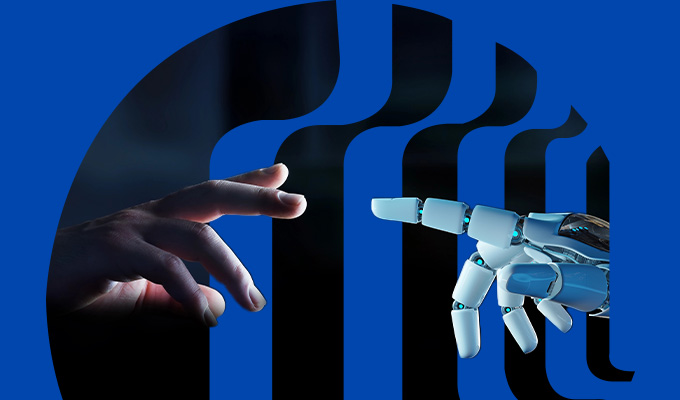A productive robotic environment is built from the ground up. This starts by prioritising integration, flexibility and safety at the design stage.
Organisations are increasingly coming to understand the value and benefits of an integrated robotic environment. According to a recent survey, nearly half of manufacturing facilities currently use robotics as an integral part of their operations. As the maturity and capabilities of robotic solutions continues to advance, the sector is primed for a significant uplift in adoption.
The aim of a well-designed integrated environment is to complement human capital. Robots aid in reducing the variance when performing repetitive tasks and help foster more reliable and efficient operations. With examples of these benefits so readily apparent across a range of sectors, companies are looking to move beyond the initial exploratory phases and are pressing forward towards greater levels of integration.
To address any risks around complexity and fragmentation, decision makers need to consider integrating robotics through a holistic lens. This means building an environment in which people, processes and technology are all connected. Achieving this goal starts with how you design your environment.
Design with application in mind
Companies need reassurance that the robotic environment they design will be fit for purpose before it is implemented. 3D modelling can help at this stage, using capabilities such as offline programming to run accurate simulations of design prototypes. This provides greater value to proofs of concept (POCs), allowing companies to gain insights into the level of effectiveness the robotics will have on their environment prior to being put into operation.
Integrated robotics is about having a main central system that can guide different machines, robots and conveyers to simplify processes and remove the issue of operating in silos. It is crucial when designing an integrated robotic environment that all elements have been designed to connect seamlessly, with inbuilt integrated controls to aid visibility and direction. Without this purpose factored into the design, manufacturers are more likely to spend time reconfiguring prototypes as opposed to implementing effective robotics.
Design with flexibility in mind
Flexibility is a desirable feature of building a connected environment and unified robot control is key to arriving at this goal. A high-performance manufacturing environment may be required to switch between several processes and products within a given period, which can potentially cause disruption if the environment isn’t flexible by design.
Having this flexibility built into the environment helps save time, both regarding setting up a machine and towards maintaining it. Connected devices support integrating this necessary flexibility, allowing manufacturers to minimise the potential downtime of key machinery.
Flexibility can also apply to the controllers themselves. Controllers working on different machines can create problems relating to visibility and integration. By designing the control network so that different processes work to an integrated set of standards, the entire process can be made more efficient from start to finish.
Design with humans in mind
Everything produced in an integrated robotic environment needs to have humans at the centre of it. We often refer to this as ‘Humanufacturing’. This is where workers are given all the necessary tools and data they need to efficiently complete their job.
An integrated environment is one that helps simplify production processes and remove common frictions that exist from the worker’s perspective. The use of diagnostics and predictive maintenance can offer greater support and safer interactions for the workers involved. When improperly designed, operators may find a significant amount of their working day is spent fixing problems only after they have started to impact operations, often needing to halt machinery to resolve issues and thus impacting productivity.
Being able to predict problems ahead of time not only makes things simpler for the people overseeing the processes, but also minimises the risk of downtime for robotic equipment. A well-designed robotic environment will support a change in workers’ responsibilities, helping them to repurpose their skills towards directing and monitoring operations, rather than manually completing a task on a line. It isn’t just about making their day-to-day easier, but about helping them allocate their time more effectively.
Design with safety in mind
At its heart, integrated robotics enables humans to work with machinery in a safe way. By its very definition, the environment will be made safer due to the reduced reliance on physical human activity, even allowing remote monitoring and maintenance to be performed on machines while they are still operating.
The eventual goal for the smart manufacturing sector should be to have robots operate safely in an industrial setting with minimal need for human involvement on the shop floor. This can be through the utilisation of sensors and motion detection, which monitor the immediate surroundings and move differently depending on a human presence, therefore reducing occupational risks.
The use of AI and computer vision also supports further progress regarding safety. By allowing the robots to learn, operate and improve independently and autonomously, changes on the floor can be made automatically without any human intervention, which helps to further mitigating safety risks.
Integrated by design
As the capabilities of robotic technology become more accessible, companies should be looking to get started in piloting these types of applications as soon as possible. Integrated robotics is a multi-dimensional, multi-disciplined environment where all elements are in play.When your machines have the capacity to communicate together seamlessly, it helps to facilitate a unified operational setup over which you have much greater control.
At its current pace of development, the field of robotics will be unrecognisable in the next five years. However, by embracing integrated robotics now, your organisation can make the journey towards maturity easier to navigate and more able to scale. Enhanced sensor integration and improvements in the capabilities of the robots will help to bring greater cohesion between humans and machines, however these innovations will always be rooted by one core pillar – aiding the worker to operate safely and more productively.
You can find out more on the Management Perspectives Hub, where you’ll find a wealth of resources describing how the latest technology can support and enhance your business – and much, much more.


